COMMENTS ON THE ART MARKET
Our Gift Shop
A Big Thank You!
It's time to treat yourself to some awesome goodies! Our gift shop is offering an exclusive 20% discount on all purchases this March, just for our loyal readers like you! From trendy t-shirts to cute coffee mugs, and even beautiful canvas prints, we've got it all! So why wait? Grab that shopping cart and fill it up with all your favorites, because this offer is too good to miss! Don't forget to use the code THANKYOU2023 at checkout to claim your discount. Happy shopping!
This sale will run through March 31st



____________________
Gallery News
20 West 55th – Feeling Hopeful
 Feeling Hopeful!
Feeling Hopeful!
We had an exciting week beginning with our return from the Palm Beach Show on Wednesday evening and traveling to Manhattan on Thursday, February 23rd, for our bi-weekly update with Sean and Chris, whose invaluable assistance we deeply appreciate. Upon arriving on the floor, we were pleasantly surprised to find that they had already begun installing the track lights, illuminating the space beautifully. The historical gallery space was particularly breathtaking, with all the lights in place, and most of the floors covered with heavy paper to ensure their protection. Only a long section remained uncovered to accommodate the movement of carts without any risk of damage.
The office spaces are nearing completion, and we eagerly await the delivery of our furniture in the second week of March. The pantry is all but finished, with the carpenter set to install the storage room millwork over the weekend. The sprinkler system has been installed, and all temporary pipes removed, rendering the space much cleaner. While we anticipate the shipment of the HVAC unit, wood doors, and trim on February 28th, the low-voltage work, such as IT, cameras, and speakers, still needs to be completed. Additionally, the historical gallery’s dark blue wall covering has arrived and will be installed once the space has been thoroughly cleaned.
While Sean mentioned a few minor setbacks, our optimism remains high. Unfortunately, a small connection piece for a recessed track light in my office was not included in the initial delivery, which may take up to four weeks to arrive. Additionally, two occupancy sensors are missing, with a projected arrival date of over a month. However, we can still operate the lights with standard switches, and the defective emergency driver for an Open Area pendant fixture poses no threat to our move-in date. All in all, we are feeling incredibly hopeful that the space will be ready for us to move in by March.
20 West 55th: Buildout Update
 Last week was very busy. First, our daughter’s baby arrived, then we had to pack for the upcoming Palm Beach Show, not to mention we needed to check on the progress of the new gallery’s buildout. Of course, the new addition to our family took priority, so we earmarked Thursday for packing (which took about 4 hours) and then went over to 20 West 55th Street in the late afternoon.
Last week was very busy. First, our daughter’s baby arrived, then we had to pack for the upcoming Palm Beach Show, not to mention we needed to check on the progress of the new gallery’s buildout. Of course, the new addition to our family took priority, so we earmarked Thursday for packing (which took about 4 hours) and then went over to 20 West 55th Street in the late afternoon.
Sean English, who is doing a great job managing the buildout, walked us through the space. We were pleased to see that the bathrooms are close to completion. The ceilings in the three open gallery spaces, along with all exposed pipes and ductwork, were painted (now that it is all white, you do not even notice it), and the pendant lights in those areas are installed. The crew began leveling the gallery floors and installing the office carpeting and the tile floors in the storage area, kitchen, and file room. A few of the door frames are now installed, and the steel doors for the bathrooms were delivered (it was nice to see that some of them have started arriving).
The more formal room (where we will display the historical works of art) is coming together nicely. The wood walls have been prepped and are ready for the blue wall covering (one of the last things to be installed), and the crown molding is up. All the pendant lights are in the drop ceiling, and the prep work for the track lighting has been completed.
Finally, all kitchen appliances were delivered and will be installed this coming week. As many of you know, we are heading to the show in Palm Beach this week and will make our next visit to the space on the afternoon of February 23.
20 West 55th – Looking Good
 On January 31st, we visited our new space and are pleased to report that they are moving along. During our previous visit, Lance noticed some sprinkler lines were a little low in one of the main galleries. The crew was able to adjust a few of the lines, so now some of them are much closer to the ceiling. All the pantry millwork and floor tiles are in, and the installation of the appliances should be completed by the end of this week. The bathroom floor tile and partition installation are done, and they will be painting the open ceiling, sprinklers, and ductwork early next week.
On January 31st, we visited our new space and are pleased to report that they are moving along. During our previous visit, Lance noticed some sprinkler lines were a little low in one of the main galleries. The crew was able to adjust a few of the lines, so now some of them are much closer to the ceiling. All the pantry millwork and floor tiles are in, and the installation of the appliances should be completed by the end of this week. The bathroom floor tile and partition installation are done, and they will be painting the open ceiling, sprinklers, and ductwork early next week.
The lights in the offices and storage room are in, and they will start installing the track lighting once the open ceiling is painted. The concrete floors are being prepped, and the wood walls in the historical gallery are in – the dark blue fabric will be one of the last items in the project – estimated time is the week of March 6th (need to be careful that nothing damages it).
Delivery of the HVAC unit is still expected at the end of February, and we all have our fingers crossed that the doors will arrive simultaneously. Remember, no doors mean no usable gallery space.
Our next visit is on February 10th.
Upcoming Shows
Charleston
We are thrilled to announce our participation in The Charleston Show, a highly selective event showcasing the best in art, antiques, and jewelry. As one of the 27 carefully chosen dealers, our gallery will display a stunning collection of 19th, 20th, and 21st-century works of art.
This year's exhibit will feature important works by renowned artists such as Bernard Buffet, Charles T. Frere, H.C. Delpy, J.F. Herring, Edouard Cortes, John Stobart, Stuart Dunkel, Todd Casey, Lucia Heffernan, and Ben Bauer. We are confident that our booth will be a highlight of the show.
We invite you to join us at The Charleston Show and experience the beauty and richness of the art world. Don't miss the opportunity to view, in person, some of the most exquisite and captivating works of art available today.
Show details:
Charleston Festival Hall
56 Beaufain Street
Charleston, SC 29401
Preview Party
March 16th
General Hours
March 17th – 18th: 10 am – 6 pm
March 19th: 11 am – 5 pm
____________________
Stocks & Crypto
By: Lance
It’s starting to seem like the hot streak was short-lived… the year got off to a nice start, but February proved to be a challenging month. Despite some signs that inflation concerns were easing, the Fed still raised rates by .25%. Frankly, the whole thing is a bit confusing… typically, consumer spending declines during inflationary periods, but that just does not seem to be happening. Instead, American consumers are continuing to spend, which is placing more upward pressure on inflation, and in turn, forcing the Fed to be more aggressive with rate hikes. At the same time, if American consumers were to stop spending so much, we’d be talking about recession concerns – I’m not sure which is better, but neither scenario is particularly appealing.
Unfortunately, all three of the major indexes were down for the month… I know we’re just two months into 2023, but the fact remains that we are at the lowest levels this year. That means all of those juicy January gains have been wiped out. The Dow shed 4.2% this month, while the S&P dropped 2.6%, and the Nasdaq was down 1.1%... it’s worth noting that at one point, the Nasdaq was up almost 6%, so it was a fairly volatile month. To make matters worse, bonds had their worst February in more than three decades… and fresh news that inflation in Spain and France unexpectedly rose, suggests that things could get worse before they get better.
As for currencies and commodities… both the Euro and Pound weakened relative to the dollar, 2.6% and 2.2%, respectively. Gold plunged nearly 6% for the month, while crude dropped 3.25%. As for the crypto kids… there was a decent amount of volatility, with trading swinging from down 10% to up 10% at various points in the month, but they all finished nearly where they started – Bitcoin gained just .25% through February, Ethereum gained 1.16%, and Litecoin dropped 2.8%. These are relatively mild numbers for such unpredictable assets.
There are those who are already set to declare the 2023 market rally is over… but I think I’m at the point where I don’t believe anyone, especially the ones who pretend like they know what is going to happen next!
____________________
The Dark Side
By: Nathan
“Utterly Disgraceful”: Indiana College Selling A Priceless O’Keeffe To Fund New Dorms
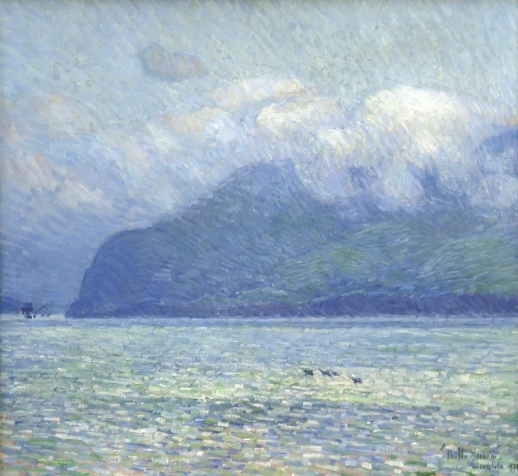 Valparaiso University in northwestern Indiana is a relatively small school with barely 3,000 students. However, it is known for its arts center, which houses the Brauer Museum of Art. The museum specializes mainly in nineteenth- and twentieth-century American art, particularly by Midwestern American artists like Julius Sloan. But the museum and school have come under fire recently after planning to sell several works from the museum collection, including a Georgia O’Keeffe masterwork, to fund dorm building renovation.
Valparaiso University in northwestern Indiana is a relatively small school with barely 3,000 students. However, it is known for its arts center, which houses the Brauer Museum of Art. The museum specializes mainly in nineteenth- and twentieth-century American art, particularly by Midwestern American artists like Julius Sloan. But the museum and school have come under fire recently after planning to sell several works from the museum collection, including a Georgia O’Keeffe masterwork, to fund dorm building renovation.
Valparaiso’s student body has shrunk by about a third in the past ten years, prompting the board of directors and university president José Padilla to enact a five-year plan to attract and retain more students. In this plan, it seems that more dorms take precedence over prized paintings. Of the three paintings the university plans to sell, The Silver Veil and the Golden Gate by Childe Hassam is valued at around $3.5 million, while specialists last appraised Mountain Landscape by Frederic Edwin Church at about $2 million. But the third work is what many have been focusing on. Rust Red Hills by Georgia O’Keeffe is considered one of the crown jewels of the Brauer Museum’s collection and is valued at $15 million.
Richard Brauer, the museum’s founding director and namesake, has been very outspoken in opposing the sale. He has even threatened to revoke his permission for the museum to use his name. “For Valparaiso University’s Museum of Art to have my name has conferred a high honor on me, but with this sale it will wrongly reflect my approval of its utterly disgraceful, irreparably existentially diminishing, unethical and seemingly unnecessary, museum art collection sale actions!” Brauer was the one who purchased O’Keeffe’s Rust Red Hills for the museum in 1962 for $5,700, making it the second work he acquired as director. It makes sense that he would feel so strongly about this. Many, including Brauer, have pointed out that selling these paintings would violate the rules set in place by the Association of Art Museum Directors (AAMD), which states that funds from the sale of artworks can only go towards purchasing additional art and maintaining collections. The AAMD has acted in the past to sanction those institutions that violate these rules. In 2014, the Maier Museum of Art at Randolph University in Lynchburg, Virginia received AAMD sanctions after the school decided to sell a George Bellows painting to fund college operations. The AAMD prohibited any affiliated organization from interacting with the Maier Museum, including loaning works and collaborating on exhibitions. Though the Brauer Museum is not an AAMD member, two hundred nineteen museums do claim membership, including three major Chicago museums just an hour away.
The American Alliance of Museums, the Association of Academic Museums & Galleries, and the Association of Art Museum Curators have also spoken out against Valparaiso’s plans to sell the three works. They issued a joint statement with the AAMD claiming that the school’s administration is “ignor[ing] issues of public trust and us[ing] the museum’s collections as disposable financial assets.” In response to the recent criticism, Padilla claims that keeping the paintings is not part of “our strategic plan and our core mission of educating students and giving them the best campus residential experience”. Despite affirming the museum’s role as a “vital and vibrant destination for students and the local community”, Padilla’s administration seems to believe that the Brauer Museum and its collection of American masterworks are not a priority when it comes to attracting prospective students and providing current students with both resources for their studies and sources of on-campus recreation. No… more dorms for a shrinking student body seem to trump all that.
Artist’s Estate Going After Louis Vuitton
Joan Mitchell was an American abstract expressionist artist often associated with the New York School of the 1950s and 1960s. Since she died in 1992, her work has become increasingly popular, with hundreds of galleries and museums adding her paintings to their permanent collections. While her work remains popular among collectors and specialists, many people may have heard about her for the first time just earlier this week when the Joan Mitchell Foundation (JMF) sent a cease-and-desist letter to the offices of Louis Vuitton in Paris.
 According to the JMF, Louis Vuitton violated copyright law in featuring some of Mitchell’s work as a backdrop for their new series of advertisements. The ads feature French actress Léa Seydoux posing with a Louis Vuitton Capucine handbag in front of Mitchell’s La Grande Vallée VII. The painting is one of the works featured in a Joan Mitchell exhibition staged at the Fondation Louis Vuitton, a gallery and cultural space operated by the fashion house in the Bois de Boulogne park in the west of Paris. The exhibition, known as the Monet-Mitchell exhibition, features sixty paintings by both Claude Monet and Joan Mitchell, highlighting what curators are calling a “dialogue” between the two. It delves into how the former influenced the latter and both artists’ exploration of similar subjects like nature.
According to the JMF, Louis Vuitton violated copyright law in featuring some of Mitchell’s work as a backdrop for their new series of advertisements. The ads feature French actress Léa Seydoux posing with a Louis Vuitton Capucine handbag in front of Mitchell’s La Grande Vallée VII. The painting is one of the works featured in a Joan Mitchell exhibition staged at the Fondation Louis Vuitton, a gallery and cultural space operated by the fashion house in the Bois de Boulogne park in the west of Paris. The exhibition, known as the Monet-Mitchell exhibition, features sixty paintings by both Claude Monet and Joan Mitchell, highlighting what curators are calling a “dialogue” between the two. It delves into how the former influenced the latter and both artists’ exploration of similar subjects like nature.
The JMF accused Louis Vuitton of “exploit[ing] her work for financial gain”. The organization has only ever licensed the use of Mitchell’s work for educational purposes like gallery exhibitions, making an effort to keep the artist’s work from being used in commercial settings. According to both the JMF and a Louis Vuitton employee, the fashion house had requested that they use some of Mitchell’s work in the advertising campaign, and, keeping with past precedent, the JMF declined. Even when Bernard Arnault, CEO of Louis Vuitton’s parent company LVMH, offered to give a generous donation to the JMF, director Christa Blatchford again declined. And yet the fashion house went on with their plans anyway. The JMF plans to send another cease-and-desist letter, this time to the Fondation Louis Vuitton, saying that they had violated the terms of their contract barring them from reproducing any of the Mitchell paintings displayed at the exhibition.
LVMH has not commented. This must be rather embarrassing for them, especially since, over the years, they have developed a reputation of rigorously pursuing and clamping down on those who use their trademarks and reproduce their work illegally. Given this reputation, I doubt Louis Vuitton will get away with this without taking a severe blow, both to their reputation and their very expensive pocketbooks.
____________________
Really?
By: Amy & Nathan
Simply Smashing: A Broken Koons Sculpture Goes Viral
 Over the weekend, I was minding my own business when something caught my attention on my newsfeed: a video of someone sweeping up a blue-and-white shattered mess among the pedestals of a gallery booth at an art fair. After some reading, I discovered that the most memorable event from Miami’s Art Wynwood this past weekend was the destruction of a $42K Jeff Koons sculpture. The work had been a small, limited edition of Koons’s famous Balloon Dog series. It was on display at the booth operated by Bel-Air Fine Art based in Geneva. While some claim that they saw a woman tap the sculpture and caused it to fall, others, including Bel-Air district manager Cédric Boero, say that she tapped the display pedestal with her foot, which caused the accident.
Over the weekend, I was minding my own business when something caught my attention on my newsfeed: a video of someone sweeping up a blue-and-white shattered mess among the pedestals of a gallery booth at an art fair. After some reading, I discovered that the most memorable event from Miami’s Art Wynwood this past weekend was the destruction of a $42K Jeff Koons sculpture. The work had been a small, limited edition of Koons’s famous Balloon Dog series. It was on display at the booth operated by Bel-Air Fine Art based in Geneva. While some claim that they saw a woman tap the sculpture and caused it to fall, others, including Bel-Air district manager Cédric Boero, say that she tapped the display pedestal with her foot, which caused the accident.
The shattered Koons sculpture was carefully swept up and packed in a box. Luckily, the work was insured. Despite being broken, the incident has actually attracted rather than deterred prospective buyers. Artist and collector Stephen Gamson was present in the booth when the incident occurred. His Instagram post about the accident went viral, and he’s expressed interest in buying the work in its current state. Boero has also claimed that other collectors are also looking to buy the box of debris. Some who witnessed the accident expressed confusion over whether this was an accident or a performance. Since the incident became widely publicized, I have a feeling that the broken Koons will fetch far more broken than it ever could if left whole.
A Gown, A Penny, And An iPhone
It has been a busy month for me with the new addition to our family and the Palm Beach show. As a result, I've had a tough time finding time for my contribution to the weekly blog posts. Nonetheless, I recently came across some interesting auction results that I should briefly cover; better late than never.
Princess Diana's Gown
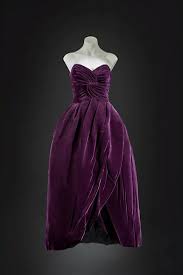
A deep-purple velvet gown belonging to Princess Diana sold at auction for more than five times the estimate. British dressmaker Victor Edelstein designed the gown for his Autumn 1989 collection. Edelstein was one of Princess Diana's long-time fashion collaborators who created some of her most iconic dresses, including the famous "Travolta dress" she wore while dancing with John Travolta at the White House in 1985. The gown that just sold far exceeded the estimate of $80 - 120K when bidding reached $480K ($604K w/p).
A Double Die Lincoln Penny
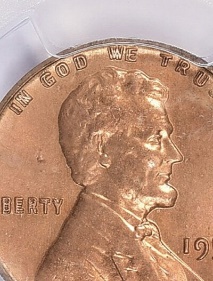 A penny might not buy much these days, but one particular penny recently sold for quite a lot. Numismatist and sculptor Stewart Blay put up his collection of Lincoln cents for auction shortly before he passed away. His collection consisted of 276 mint-condition Lincoln pennies dating back to 1906. One of the pennies (from 1958) was known as a "double die," which occurs when the coin is struck twice by the die, creating a slightly blurred or doubled image. This type of error is rare and highly sought after by collectors, which can drive up the coin's price significantly. Bidding for the 1958 penny started at just $1, and 18 bidders vied for the rare coin. The penny received 117 bids, and when the lot finally closed, the winner paid $1.01M ($1.136M w/p), enabling them to complete their collection.
A penny might not buy much these days, but one particular penny recently sold for quite a lot. Numismatist and sculptor Stewart Blay put up his collection of Lincoln cents for auction shortly before he passed away. His collection consisted of 276 mint-condition Lincoln pennies dating back to 1906. One of the pennies (from 1958) was known as a "double die," which occurs when the coin is struck twice by the die, creating a slightly blurred or doubled image. This type of error is rare and highly sought after by collectors, which can drive up the coin's price significantly. Bidding for the 1958 penny started at just $1, and 18 bidders vied for the rare coin. The penny received 117 bids, and when the lot finally closed, the winner paid $1.01M ($1.136M w/p), enabling them to complete their collection.
The First-Generation iPhone

Apple released the first-generation iPhone on June 29, 2007. It was a revolutionary device that combined a mobile phone, music player, and internet browser into a single device, and it quickly became a cultural icon. One lucky woman received the iPhone as a gift from friends and chose never to open it. Still in its original packaging with the factory seal intact, the cell phone sold for more than 100 times the original price. It was expected to sell for more than $50,000 and bidding opened at just $2,500. Receiving just 27 bids, the device finally sold for $63.4K – not too bad considering the phone originally sold for $599 – a hefty price tag for 2007!
____________________
The Art Market
By: Nathan & Howard
Sotheby’s Masters Week: The Scheumann Collection
On January 26th, Sotheby’s New York continued their short, single-owner collection sales. The Fisch Davidson collection of Baroque paintings fell just slightly short of expectations, but perhaps the following sale of Dutch Masterpieces from the Theiline Scheumann collection would fare better. While nothing matched the $23.5M achieved by Rubens’s Salome earlier in the day, the Scheumann collection was noteworthy for its much smaller and far more intimate Young Woman Sealing a Letter by Candlelight by Frans van Mieris the Elder. The painting is consistent with genre paintings of the Dutch Golden Age, which look at scenes from everyday life. These certainly stand in stark contrast with the more imposing, grandiose biblical and historical paintings of the Fisch Davisson Collection. The Van Mieris led the sale at $2.2M (or $2.7M w/p), slightly exceeding its $2 million high estimate.
 The last of the sale’s twelve lots came up right behind: Imaginary View of a Quiet Canal in Amsterdam by Jan van der Heyden. Looking into a historical street scene can be interesting when the artist indicates where the painting is set. Finding an image of the location today and comparing it to the work scratches the kind of itch one gets when completing a puzzle or going through a Where’s Waldo book. You can see what has changed and what has remained locked in time. Of course, we’re very familiar with this, given the many Blanchard and Cortès Paris street scenes we’ve seen come and go. But while there can be no such satisfaction in studying the Van der Heyden, the fact that the artist must know a city so well to create a believable fictional street scene in that city’s style takes a certain kind of skill. Imaginary View reached its minimum estimate at $1M (or $1.26M w/p). Finally, in third, Aert van der Neer’s Marshy Forest Landscape at Moonlight fell just short of the $1M to $1.5M estimate range Sotheby’s specialists assigned it, reaching only at $950K (or $1.2M w/p). This is surprising since, according to the house experts, this scene is one of the finest of Van der Neer’s works to come to auction in recent years. Marshy Forest is also very typical for Van der Neer, who enjoyed producing moonlight landscapes that wouldn’t seem out of place among the nocturnal scenes of the German Romantics a couple of centuries later.
The last of the sale’s twelve lots came up right behind: Imaginary View of a Quiet Canal in Amsterdam by Jan van der Heyden. Looking into a historical street scene can be interesting when the artist indicates where the painting is set. Finding an image of the location today and comparing it to the work scratches the kind of itch one gets when completing a puzzle or going through a Where’s Waldo book. You can see what has changed and what has remained locked in time. Of course, we’re very familiar with this, given the many Blanchard and Cortès Paris street scenes we’ve seen come and go. But while there can be no such satisfaction in studying the Van der Heyden, the fact that the artist must know a city so well to create a believable fictional street scene in that city’s style takes a certain kind of skill. Imaginary View reached its minimum estimate at $1M (or $1.26M w/p). Finally, in third, Aert van der Neer’s Marshy Forest Landscape at Moonlight fell just short of the $1M to $1.5M estimate range Sotheby’s specialists assigned it, reaching only at $950K (or $1.2M w/p). This is surprising since, according to the house experts, this scene is one of the finest of Van der Neer’s works to come to auction in recent years. Marshy Forest is also very typical for Van der Neer, who enjoyed producing moonlight landscapes that wouldn’t seem out of place among the nocturnal scenes of the German Romantics a couple of centuries later.
The Scheumann collection’s Dutch masterworks, however, suffered a similar fate to the Fisch Davidson collection. Sotheby’s specialists predicted that all twelve lots would bring in at least $7.9M. However, the Scheumann collection ended up with a $6.5M total hammer. This can mainly be attributed to four of the total twelve lots (33%) going unsold, most notably Jacob Isaacksz. van Ruisdael’s A Wooded Landscape with a Quiet Stream, which specialists predicted to sell for at least $1M. An additional three lots (25%) sold for below estimate, while three lots (25%) sold within and two lots (17%) sold above.
Sotheby’s Masters Week: Master Paintings Part 1
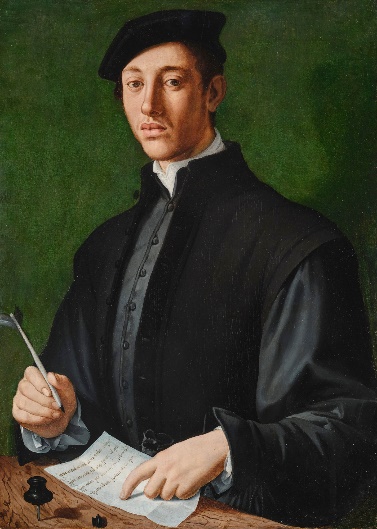
To close out their nearly two-week-long Masters Week, Sotheby’s New York hosted a two-part Old Masters sale on January 26th. While the first sale was far shorter than the second, it contained the greater bulk of the high-value pieces. Probably the most well-known and publicized was the Agnolo Bronzino Portrait of Young Man with a Quill and a Sheet of Paper, which art historians say is a possible self-portrait. Bronzino’s mythological or biblical scenes may seem very odd today, given his figures’ strange, disproportionate anatomy, consistent with some other late Renaissance and Mannerist painters. However, that strangeness was not transferred to his portraits, some of the finest and most recognizable of the sixteenth century. Portrait of a Young Man with a Quill was recently in the news as having been returned by the German government to the estate of Ilsa Hesselberger. Hesselberger was a Munich socialite who, though Protestant by faith, qualified as Jewish under Nazi race laws and had her art collection confiscated before being deported to German-occupied Lithuania, where she was murdered. Her descendants had the portrait returned to them by the German government last year, and they decided to consign it to Sotheby’s for this sale. When the Haselberger estate consigned the work, they had no idea it was a Bronzino portrait. Experts previously attributed the work to Bronzino’s contemporary Jacopino del Conte. But once the dirt and varnish were cleaned off the painting, Sotheby’s Old Masters specialists, with outside help from the Accademia di Belle Arti in Florence, gave a positive attribution to Agnolo Bronzino. Sotheby’s specialists predicted the portrait would sell for anywhere between $3M and $5M. However, given the story behind its ownership and the fact that works by Bronzino rarely come to auction, the painting sold for $9M (or $10.6M w/p). According to Ilsa Hesselberger’s descendants, the proceeds will go to several charitable organizations.
Coming in second place at the sale is another painting that was in the news recently because of its provenance. Study for Saint Jerome by Anthony van Dyck was considered lost for hundreds of years until it turned up in upstate New York, where it had been collecting dust in a shed. No one entirely knows where the Van Dyck came from before turning up in Kinderhook, New York. Collector Albert Roberts found and purchased the piece in 2002 for $600. Van Dyck experts agree that the study is an early work, likely from when the Flemish master was a student under Peter Paul Rubens. Predicted to sell for $2M to $3M, Saint Jerome eventually fell nicely within estimate, with the hammer coming down at $2.5M (or $3.07M w/p). Following up close behind the Van Dyck was an early fourteenth-century Nativity scene. Previously, the small 8-by-6½-inch panel had been attributed to the pre-Renaissance master Giotto. But when it came to auction in 2004, specialists reattributed the work to an anonymous painter known by art historians only as the Master of the Spinola Annunciation. The panel was originally part of a set of four, showing the lives of the Virgin Mary and Jesus Christ. The first of these panels, now in a private collection in Italy, is an Annunciation scene at one point owned by the Spinola family of Genoa, giving the artist their academic name. The second lot in the sale, the Nativity hit its low estimate at $2M (or $2.43M w/p).
Of course, a sale like this wasn’t without its surprises. While a small handful of lots achieved double their high estimates, one painting stood out in particular. Portrait of Lucy Loftus was created around 1673 by Sir Peter Lely, not long after the subject’s marriage to the Viscount Lisburne. The portrait had several prominent owners, including Britain’s first Prime Minister Sir Robert Walpole, as well as Cornelius Vanderbilt II, who kept the portrait at the Breakers mansion in Newport, Rhode Island. Predicted only to sell for $300K at most, the portrait eventually sold for $1.25M (or $1.57M w/p).
Of the fifty-three lots available, twenty-one (40%) went unsold. Surprisingly though, the sale’s total fell within its presale estimate range, likely because of the Bronzino portrait selling for as much as it did. Even though only eight lots (15%) sold within estimate, with fourteen lots (26%) selling above, the entire sale brought in $23.6M, slightly above the $22.9M minimum total estimate. The sale would have done far better had some of the other highly-valued lots, like Sebastiano del Piombo’s Portrait of a Young Woman Holding a Crown of Laurels (est. $1.5M to $2M), met their reserves.
Sotheby’s Masters Week: The Fisch Davidson Collection
 On January 18th, Sotheby’s New York kicked off its Masters Week. This consisted of a series of auctions, mainly featuring Old Masters and nineteenth-century realist art. But leading up to the Master Paintings sale on January 26th, Sotheby’s held a handful of very short sales featuring works from single-owner collections. Even though these collections might not have done as well as intended, they regardless provided an opportunity to showcase some wonderful Old Masters paintings. The first was the Fisch Davidson collection, featuring ten Baroque masterpieces. The star of this sale was the much-anticipated Peter Paul Rubens biblical scene Salome presented with the head of Saint John the Baptist. This slightly gruesome painting has impeccable provenance, including the Spanish royal family and Steve Wynn. This is one of Rubens’s earliest major works that, along with Samson & Delilah and Massacre of the Innocents, established him as one of the premier Flemish masters after his return from Italy. It is common nowadays for people to describe a well-composed photograph as akin to a Renaissance painting. However, oftentimes, they actually mean Baroque paintings, and Salome provides a good example of this. The headless body of the saint lies on the ground with blood pouring from his neck. The executioner is sheathing his sword while someone presents Salome with the head on a platter. Salome’s maid pulls the saint’s tongue out of his mouth, showing the reason for his execution: speaking out against King Herod’s marriage to his own sister-in-law Herodias. Being such an early work with a popular subject, I suppose it’s no surprise that Salome came out head and shoulders above the rest of the sale at $23.5M (or $26.9M w/p).
On January 18th, Sotheby’s New York kicked off its Masters Week. This consisted of a series of auctions, mainly featuring Old Masters and nineteenth-century realist art. But leading up to the Master Paintings sale on January 26th, Sotheby’s held a handful of very short sales featuring works from single-owner collections. Even though these collections might not have done as well as intended, they regardless provided an opportunity to showcase some wonderful Old Masters paintings. The first was the Fisch Davidson collection, featuring ten Baroque masterpieces. The star of this sale was the much-anticipated Peter Paul Rubens biblical scene Salome presented with the head of Saint John the Baptist. This slightly gruesome painting has impeccable provenance, including the Spanish royal family and Steve Wynn. This is one of Rubens’s earliest major works that, along with Samson & Delilah and Massacre of the Innocents, established him as one of the premier Flemish masters after his return from Italy. It is common nowadays for people to describe a well-composed photograph as akin to a Renaissance painting. However, oftentimes, they actually mean Baroque paintings, and Salome provides a good example of this. The headless body of the saint lies on the ground with blood pouring from his neck. The executioner is sheathing his sword while someone presents Salome with the head on a platter. Salome’s maid pulls the saint’s tongue out of his mouth, showing the reason for his execution: speaking out against King Herod’s marriage to his own sister-in-law Herodias. Being such an early work with a popular subject, I suppose it’s no surprise that Salome came out head and shoulders above the rest of the sale at $23.5M (or $26.9M w/p).
Behind the Rubens, both chronologically in the sale and in terms of price, were two more biblical scenes that each achieved a hammer price of $4M (or $4.89M w/p), hitting the low end of their $4M to $6M estimate ranges. The first was Christ crowned with Thorns by Valentin de Boulogne. The last time this dark, intimate look at Christ’s pre-crucifixion humiliation was up at auction was in 2016 at the Sotheby’s New York sale of Alfred Taubman’s estate. Back then, it sold for $5.18 million w/p. Coming up right behind it was Orazio Gentileschi’s Penitent Saint Mary Magdalene. This painting had been in the same family for centuries, from the work’s commission in 1621 all the way to 1975, when the British collector Thomas Grange purchased the work.
However, Sotheby’s specialists were expecting at least $43.2M from the sale. Unfortunately, the collection fell just a bit short at $41.9M. No lots went unsold, so this can mainly be attributed to the lots that sold for below estimate. Salome, while selling for an impressive $23.5M, was expected to sell for no less than $25M. The Rubens was actually one of four lots to sell for below estimate that also included Giulio Cesare Procaccini’s Judith & Holofernes (est. $1M to $1.5M; $800K hammer) and Georges de la Tour’s Saint James the Greater (est. $3.5M to $5M; $3M hammer). All other lots sold within estimate, except one painting by an unknown artist who was likely a student or follower of Rembrandt van Rijn. Young Man Asleep Before an Open Book was the only lot to exceed its estimate range, selling for $750K (or $945K w/p) when predicted to sell for no more than $700K.
Sotheby’s = Bouguereau And His Circle: Then And Now
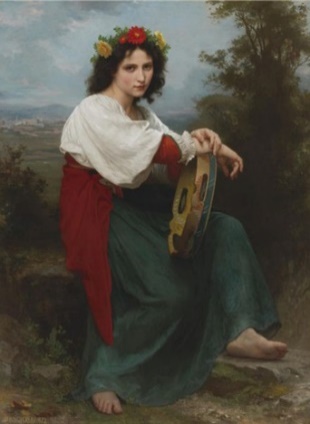
On January 26th, Sotheby’s presented a sale of works by Bouguereau and artists who were either students or followers. The offerings spanned the last 180 years, and while some of the better pieces did fine, overall, the sale did not hit its mark.
I will sound like a broken record (and you will hear it again when I review a few other 19th-century sales) — when will these salerooms properly curate auctions of 19th-century paintings? Look, offering poor quality works, many with condition issues is not a recipe for success. Anyway, let’s get into the action.
The top lot was William Bouguereau’s L’Italienne au Tambour de Basque which dates from 1872. This 56 x 42-inch work features a seated female figure holding a tambourine. The work beautifully illustrates the artist’s ability to accurately capture the human figure’s hands, feet, and face, something many other artists try to achieve but often fall short of. The work was estimated to sell in the $550-$750K range and hammered for $700K ($882K w/p). The seller originally purchased the work in 1987 for $253K, so that was a nice return.
Taking second place was another William Bouguereau titled La petite écolière (The Little Schoolgirl). This slightly smaller piece (41 x 30 inches) dated from 1879 and carried a $600-$800K estimate. I was not a fan of the image, but someone was willing to pony up $550K ($693K w/p) to take it home. So with the premium, it fell in the middle of its estimate.
Third place was nabbed by William’s second wife, Elizabeth Gardner Bouguereau. Her painting The Little Mother measures 49.5 x 31.75 inches, was created in 1891 and displayed her ability to paint the human figure. My question has always been, did her husband lend a hand? I am waiting for someone to research her life and career for a catalogue raisonné. Then we will find out how her technical abilities changed throughout her career, from the time before she met William, the years she was with him, and then after he passed away. The painting was estimated to sell in the $300-500K range and hammered at $320K ($403.2K w/p).
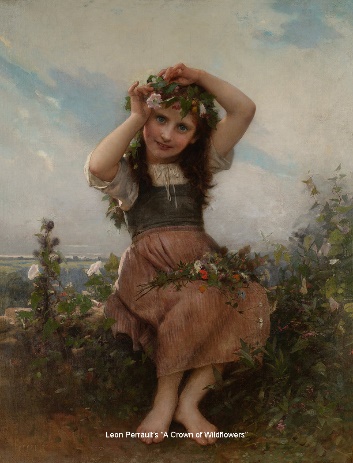 Rounding out the top five were William Bouguereau’s large (67 x 36 inch) painting Prêtresse de Bacchus which dates from 1894. This lot was not one of my favorite works by the artist as the subject seemed a bit silly, and I assume others felt the same since it fell well short of its $400-600K estimate – selling for $300K ($378K w/p). And then there was a very small (16 x 11.5 inch) and very nice work by Alexei A. Harlamoff titled The Young Model. While viewing the sale, this was one of the few works that drew my attention. The lot was expected to sell in the $50-70K range and brought $100K ($126K w/p). It shows you that nice works that are fresh to the market will garner high prices.
Rounding out the top five were William Bouguereau’s large (67 x 36 inch) painting Prêtresse de Bacchus which dates from 1894. This lot was not one of my favorite works by the artist as the subject seemed a bit silly, and I assume others felt the same since it fell well short of its $400-600K estimate – selling for $300K ($378K w/p). And then there was a very small (16 x 11.5 inch) and very nice work by Alexei A. Harlamoff titled The Young Model. While viewing the sale, this was one of the few works that drew my attention. The lot was expected to sell in the $50-70K range and brought $100K ($126K w/p). It shows you that nice works that are fresh to the market will garner high prices.
Someone reading this review may be able to educate me on why this particular painting sold. Lot 239 was a large Leon Perrault titled A Crown of Wildflowers. The lot was estimated to bring in the $30-50K range and hammered for $28K ($35.9K w/p). While viewing the sale with the family, we all noticed the work’s really poor condition — serious overcleaning (see the detail images below). Each of us had the same opinion; this one would not sell. Guess we  were wrong. I would like to know if the buyer examined the work in person, or did they base their decision on the website images? If you are interested in seeing a nice painting by Perrault, check out The Awakening of Love.
were wrong. I would like to know if the buyer examined the work in person, or did they base their decision on the website images? If you are interested in seeing a nice painting by Perrault, check out The Awakening of Love.
By the time the sale ended, of the 50 lots in the catalog, 1 appears to have been withdrawn, and 20 were unsold (8 of which were by contemporary artists). That left them with a sell-through rate of just 61%. The low end of their estimate range was $3.36M, and the sale brought $2.53M ($3.2M w/p), so even with the premium, they were a little short. Of the 29 sold works, 8 were below, 14 within, and 7 above their estimate range. This gave them an accuracy rate of 28.6%.
American Art At Bonhams Los Angeles
 On Tuesday February 7th, Bonhams Los Angeles hosted an American art sale called Coast to Coast. The auction featured a wide variety of affordable work from across the nineteenth and twentieth centuries, including pieces by William Clapp, Mary DeNeale Morgan, and Charles Pabst. Most of the offerings were American landscapes or wildlife scenes, of which the most expensive paintings were very representative. All three top lots were works that exceeded their estimates and achieved $15K each (or $19.1K w/p). Old Man of the Mountain by David Johnson is a small, 16-by-22-inch landscape created in 1875, showing the titular New Hampshire rock formation off in the distance. Bonhams specialists only expected the Johnson landscape to make $3.5K at most, meaning it exceeded its high estimate more than four times over. The actual Old Man of the Mountain rock formation held great significance to indigenous people and became a symbol for the state of New Hampshire, making its collapse in 2003 an even more disheartening event.
On Tuesday February 7th, Bonhams Los Angeles hosted an American art sale called Coast to Coast. The auction featured a wide variety of affordable work from across the nineteenth and twentieth centuries, including pieces by William Clapp, Mary DeNeale Morgan, and Charles Pabst. Most of the offerings were American landscapes or wildlife scenes, of which the most expensive paintings were very representative. All three top lots were works that exceeded their estimates and achieved $15K each (or $19.1K w/p). Old Man of the Mountain by David Johnson is a small, 16-by-22-inch landscape created in 1875, showing the titular New Hampshire rock formation off in the distance. Bonhams specialists only expected the Johnson landscape to make $3.5K at most, meaning it exceeded its high estimate more than four times over. The actual Old Man of the Mountain rock formation held great significance to indigenous people and became a symbol for the state of New Hampshire, making its collapse in 2003 an even more disheartening event.
Next, Francis Lee Jaques’s Four Canes, Three Pintails, A Marsh in the Mist was expected to make it to the top of the sale with an $8K to $12K estimate range. The contrast between the well-defined birds in the foreground and the muted browns and grays of the background is somewhat reminiscent of Japanese panel paintings. While this painting also exceeded its estimate range, it did not do so to the extent that the Johnson painting did. And finally, more birds from Harry Curieux Adamson with his Quail Covey Rising from Grasses. Adamson was a California painter who passed away in 2012 and was known primarily for his wildlife paintings, particularly those of waterfowl and other birds. The Adamson painting nearly reached double its $8K assigned high estimate.
Bonhams advertised that a good deal of the sale came from the collection of Gail Feingarten Oppenheimer, a prominent collector from California and widow of Charles Feingarten, and art dealer who at one time was considered the premier dealer of works by Auguste Rodin in the United States. Thirty-five of the sale’s 260 lots came from Gail’s collection, twelve of which were works by the San Francisco artist Arthur Okamura. The closest a piece from the group got to the top was Aaron Gunn Pyle’s tempera-on-board Harvest Scene, which sold for $13K (or $16.5K w/p). The Feingarten Oppenheimer collection brought in $39.2K, about 10% of the auction’s total. The Feingarten Oppenheimer collection did, however, manage to get one of the sale’s biggest surprises. An unsigned ink-on-paper drawing by Augustus Edwin John called Meeting in the Park was only predicted by Bonhams specialists to achieve $600 at most, yet went on to bring in $3.2K (or $4.1K w/p), over five times the high estimate. Additionally, the Edith Cook painting Birch Tree Landscape created in 1866 ended up selling for $5K (or $6.3K w/p), over six times its $800 high estimate. Birch Tree Landscape is actually one of five works from the Coast to Coast sale that was previously in the collection of Soloman Grossman, a collector who, in the 1970s, donated some of his antique furniture to the White House Preservation Committee to help furnish the presidential residence.
Even though 107 of the total 260 lots sold under estimate, the fact that they sold at all means that the sale as a whole did not do too badly. Coast to Coast ended up with a sell-through rate of 90%, with only twenty-five lots going unsold. With fifty-eight lots (22%) selling within estimate and seventy lots (27%) selling above, the sale brought in a total of $393.7K against a minimum total estimate of $319.6K.
____________________
Deeper Thoughts
By: Nathan
Artificial Intelligence In The Arts: A Long Way To Go
 Over a year ago, I wrote about artificial intelligence used in art authentication. This became a popular subject mainly because of an AI program’s use by researchers who concluded that the Rubens work Samson & Delilah at London’s National Gallery is most likely a copy or forgery. While many jumped the gun at the time, saying that AI and automation may replace living humans in art authentication, I was skeptical. AI is a tool and should be used as such, not as a whole-hog replacement for living scholars. And recently, AI has been in the news again thanks to British researchers and their use of facial recognition software in authenticating a possible Raphael.
Over a year ago, I wrote about artificial intelligence used in art authentication. This became a popular subject mainly because of an AI program’s use by researchers who concluded that the Rubens work Samson & Delilah at London’s National Gallery is most likely a copy or forgery. While many jumped the gun at the time, saying that AI and automation may replace living humans in art authentication, I was skeptical. AI is a tool and should be used as such, not as a whole-hog replacement for living scholars. And recently, AI has been in the news again thanks to British researchers and their use of facial recognition software in authenticating a possible Raphael.
Researchers from several British universities have concluded that a Madonna and Child painting known as the De Brécy Tondo is likely the work of the Italian Renaissance master Raphael Sanzio. Using facial recognition analysis, researchers compared the De Brécy Tondo with a similar Madonna and Child work by Raphael known as the Sistine Madonna, owned by the Gemäldegalerie Alte Meister in Dresden. Such facial recognition software found the two Madonnas’ faces were 97% similar. For years, many experts believed the De Brécy Tondo was a nineteenth-century copy of the Sistine Madonna. However, new research shows otherwise. Chemical tests run on the pigments in 2004 showed that the creator applied Renaissance-era materials and techniques in its creation. Furthermore, researchers traced the provenance back through the Wynne-Eyton family to a seventeenth-century ancestor Sir Richard Wynn, who served as treasurer and receiver-general to Queen Henrietta Maria of England. The fact that the queen’s monogram is stamped on the back of the canvas makes it likely that the queen gifted the painting to Wynn. The family kept it until its 1981 sale to the British art collector George Lester Winward.
Shortly before his death, Winward founded the De Brécy Trust to preserve his art collection and make the works available to researchers for future study. While the De Brécy Trust agrees with some experts’ positive attribution of the Tondo as a Raphael, they are definitely a minority. There has been consistent opposition to a positive Raphael attribution for decades. Before his 2020 death, the German art historian Jürg Meyer zur Capellen, one of the world’s foremost experts on Raphael, offered several rebuttals that still apply even without the new data from facial recognition analysis. Meyer zur Capellen noted that the tondo is on canvas. While Raphael did create some paintings on canvas, including the Sistine Madonna, all of Raphael’s paintings on canvas had one thing in common. Whether it’s the Sistine Madonna, the Portrait of Baldassare Castiglione, or La Velata, the paint is not applied so thickly as to cover the canvas’s woven texture. Meanwhile, in the De Brécy Tondo, the texture of the canvas is completely covered up with a layer of priming paint. Meyer zur Capellen also points out that the shading on the figures has an odd green quality, almost like oxidized copper. This stands in stark contrast with the warmth of the colors seen in the Sistine Madonna.
It’s also important to point out that the researchers who have provided this new data using facial recognition software are not art historians or experts in art curation or preservation. Dr. Christopher Brooke from the University of Nottingham is an expert in digital image analysis. His partner, Dr. Hassan Ugail, is a professor of visual computing at the University of Bradford. So, while I applaud their enthusiasm and interest in the arts, artificial intelligence alone, wielded by experts outside the field, won’t be making any earth-shattering discoveries anytime soon. Even if the faces of the two Madonnas were a complete match, it doesn’t mean that the same person created the two. In the words of art historian Fabrizio Federici, “a copy tries to look like the original, otherwise it would not be a copy.”
New York’s Mini-Bean
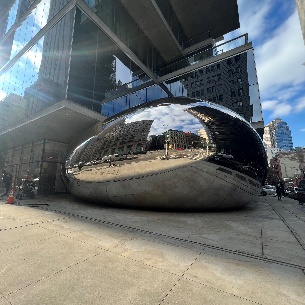
Anish Kapoor’s sculpture Cloud Gate, popularly known as The Bean in Chicago’s Millennium Park, was at first despised but has since become one of the Windy City’s most iconic landmarks. And now Manhattan is getting a Bean of its own. On January 31st, another Kapoor sculpture similar to the Bean was unveiled outside 56 Leonard Street in Manhattan. The building is popularly known as the Jenga Tower, where Kapoor owns a $13.5 million apartment. The work does not yet have a title, so some have called it the Mini-Bean. The Mini-Bean seems to interact interestingly with its environment: it almost seems like a glob of mercury slightly squished by the second-floor cantilever of the building. While that certainly does make it distinct from its big brother in Chicago, some have lamented that the sculpture’s placement so close to the building means people won’t be able to view it in the round.
Kapoor meant to unveil the work much sooner, but Covid travel restrictions made it impossible for the British installation team to continue working. This left the work unfinished in the open air for several years, leading some to refer to the work as the Half-Bean. While the Chicago sculpture is made from about one hundred thirty stainless steel panels welded together over a single support structure, the Mini-Bean is much smaller, made of only thirty-eight panels. But smaller in size does not mean construction wasn’t cheap. Due to the aforementioned construction delays and structural problems last summer, the Mini-Bean likely cost about $8 million and possibly as much as $10 million.
Like the Chicago Bean, this New York Mini-Bean is receiving its fair share of criticism from the get-go. Alex Greenberger of ArtNews called this new Bean “an eyesore that no one asked for” and “a big, shiny, reflective object that feels like the final boss of ugly public art in New York”. He points out that while the Chicago Bean is made of reflective panels seamlessly welded together to create the appearance of a single whole, the Mini-Bean appears rather slapdash in its construction, with the panels’ edges clearly visible up close. Furthermore, the sculpture’s material is not as weather-resistant as the larger Chicago sculpture. Even within the first few days after its completion, water staining is starting to become an issue. Whether or not Kapoor will address these defects in the future is uncertain.
Amsterdam’s Once-In-A-Lifetime Vermeer Show
 On Friday February 10th, the largest-ever exhibition of the works of Johannes Vermeer opened at the Rijksmuseum in Amsterdam. Works by Vermeer are few and far between, with scholars often disagreeing on how many completed works of his truly exist. There are at least thirty-four verifiable Vermeer paintings, while some dispute the authenticity of three additional pieces. Regardless, twenty-eight works by the Dutch master, about three-quarters of his total existing work, now sit in one place. These include some of his most iconic works like Girl with a Pearl Earring, View of Delft, and The Geographer. Nick Glass of CNN called the exhibition “the art world’s coup of the year”. Ticket sales exceeded 200,000 before the show even opened.
On Friday February 10th, the largest-ever exhibition of the works of Johannes Vermeer opened at the Rijksmuseum in Amsterdam. Works by Vermeer are few and far between, with scholars often disagreeing on how many completed works of his truly exist. There are at least thirty-four verifiable Vermeer paintings, while some dispute the authenticity of three additional pieces. Regardless, twenty-eight works by the Dutch master, about three-quarters of his total existing work, now sit in one place. These include some of his most iconic works like Girl with a Pearl Earring, View of Delft, and The Geographer. Nick Glass of CNN called the exhibition “the art world’s coup of the year”. Ticket sales exceeded 200,000 before the show even opened.
The last time an equally-extensive collection of Vermeer works was brought together was 1995, when Washington’s National Gallery hosted its exhibition of twenty-one paintings. With a show like this, with so many of the artist’s original works on display at one time, visitors can now see the evolution of Vermeer’s style and the development of his technique. The cooperation necessary to make this show possible has also spurred collaboration between major museums in Vermeer scholarship. Research projects involving the Rijksmuseum, Washington’s National Gallery, and New York’s Metropolitan Museum of Art have allowed art historians and conservators to draw more definitive conclusions about some of the paintings attributed to the Dutch master. For example, last September, new scans of the Rijksmuseum’s famous Milkmaid painting revealed previous features that were later painted over, flying in the face of the widely-accepted understanding of Vermeer as a methodical and meticulous painter who rarely ever made changes as large or visible as this. Furthermore, the National Gallery of Art in Washington DC announced three months ago that one of its four Vermeer paintings, Girl with a Flute, is most likely by another artist, possibly an associate of Johannes Vermeer. Despite this revelation, Girl with a Flute is on loan to the Rijksmuseum and on display as part of the Vermeer exhibition.
Some of the paintings notably absent from the exhibition include The Music Lesson (part of the Royal Collection kept at Buckingham Palace), The Astronomer (held at the Louvre), and Woman with a Water Jug (kept at New York’s Metropolitan Museum of Art). Obviously, the Vermeer painting The Concert also could not be featured in the Rijksmuseum exhibition since it was infamously stolen from Boston’s Gardner Museum in 1990. The Rijksmuseum’s Vermeer exhibition will run until June 4th.
The Met Recognizes Ukraine’s Cultural Heritage
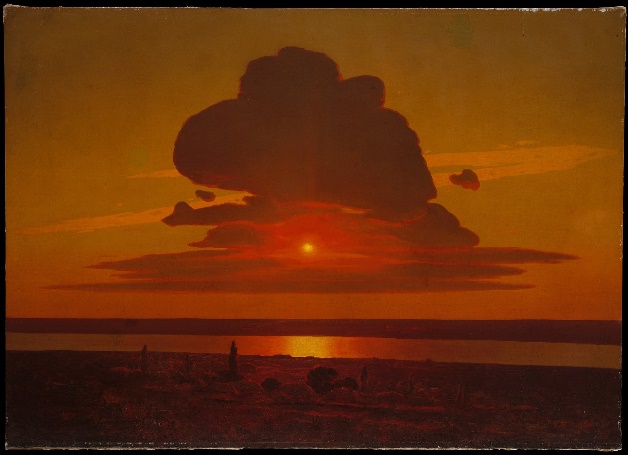
Eleven Western countries are now sending tanks and other military equipment to Ukraine. Meanwhile, a seemingly unending amount of poorly-equipped Russian soldiers are pouring over the border. In the meantime, the Ukrainian people and Ukraine’s culture and national identity are becoming increasingly important players in the nearly year-long conflict. As a result, Western art institutions are starting to become more conscious of Ukraine’s contributions to the visual arts and try to understand how they became muddled or glossed over in the first place. Most recently, in what many call a significant step, New York’s Metropolitan Museum of Art has now categorized three prominent artists as Ukrainian after previously identifying them as Russian for years.
Ivan Aivazovsky, Arkhyp Kuindzhi, and Ilya Repin are three nineteenth-century painters previously identified as Russian by the Met who are now recognized as Ukrainian. All three were born in what is now Ukraine and had very different relationships with their respective identities. The most well-known of the three is Ilya Repin, mostly known for his realist paintings like They Did Not Expect Him, as well as historical scenes like Reply of the Zaporozhian Cossacks and Ivan the Terrible and His Son. While Repin self-identified as Russian because he was a subject of the Russian Empire, he frequently returned to Ukrainian subjects in his work, like village life, the cossacks, and the poetry of Taras Shevchenko.
Arkhyp Kuindzhi was mainly a landscape painter whose work was known for its incredibly expressive capturing of light in nature. His magnificent work Red Sunset on the Dnieper is the only Kuindzhi work in the Metropolitan Museum’s collections and the only one by any of the three artists currently displayed in the galleries. The painting shows the longest river in Ukraine, the River Dnieper (also called the Dnipro), which more recently has been fortified and helped Ukrainian forces keep Russian troops from advancing into the west of the country. Kuindzhi was a native of the city of Mariupol, the target of a nearly three-month Russian siege in 2022 that destroyed large swaths of the city. The Kuindzhi Museum, dedicated to the artist’s life and work, was destroyed in the siege.
Lastly, and probably the most complicated of the three, Ivan Aivazovsky was mainly a painter of landscapes, seascapes, and Orientalist scenes set in the Ottoman Empire. Because of the multiethnic nature of the Russian Empire, several groups often claim him as their own. Russia claims Aivazovsky because he was a subject of the Russian Empire and was identified as Russian abroad. Armenia claims Aivazovsky because he was born to ethnic Armenian parents. Ukraine claims Aivazovsky (and the Met concurs) because he was born in and spent much of his life in Ukraine. The ability of a single existing country to claim him today is incredibly complicated and contentious. Due to the circumstances of his birth and life, it is nearly impossible to place one of the most well-known painters to come out of the Russian Empire in the nineteenth century into a neat, little box of one country or another. No one side is completely in the right, but none of them are wrong either.
When London’s National Gallery of Art decided to change the name of a Dégas pastel work from Russian Dancers to Ukrainian Dancers last April, for the first time, many became aware of how Russia in all its forms has not only politically but culturally dominated Eastern Europe and the Slavic world for centuries. An independent Ukraine has only existed since the 1990s, but that nation wasn’t simply invented out of whole cloth right then and there. The Soviet Union and the Russian Empire that preceded it were enormous, multiethnic states where large national groups like Russians and Ukrainians shared a country with smaller ethnicities like Armenians, Moldovans, and Latvians. Therefore many of these less-populous nations were grouped under the “Russian” umbrella, with Russia claiming not only these artists’ works but even their nationalities and identities. Many artists who were born and worked in the Russian Empire were often identified as Russian by Western art historians and cultural institutions regardless of where they were from or how they themselves identified. So even if it may not seem like much, changing a few words on a painting’s information card recognizing an artist as Ukrainian restores not just a small piece of cultural heritage but a sense of pride and accomplishment to a nation that for centuries had been swept under the rug and forgotten.
The Rehs Family
© Rehs Galleries, Inc., New York – March 2023
